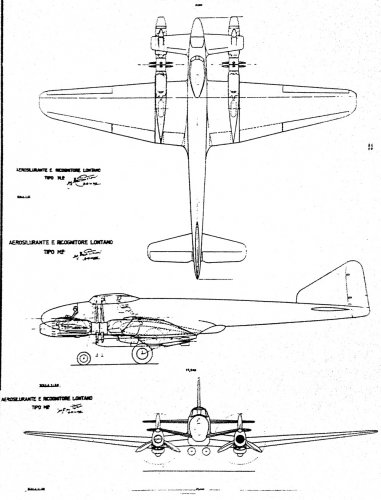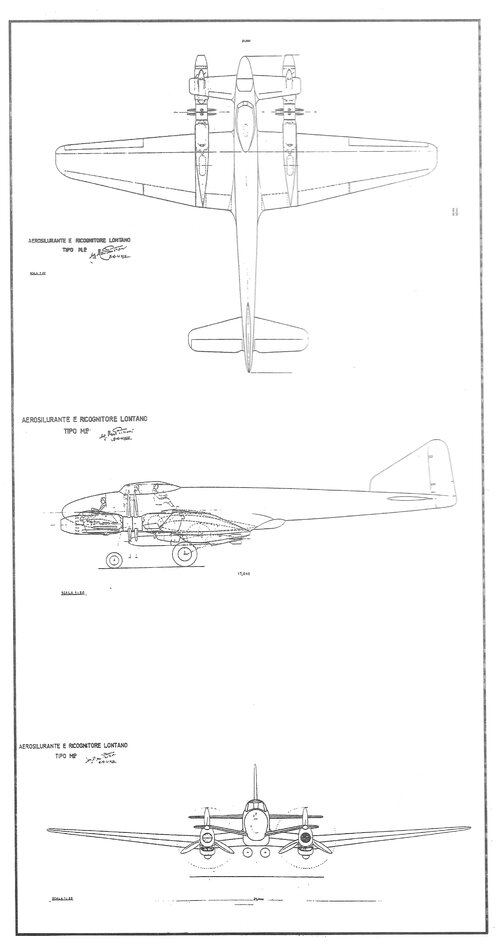lucamax
ACCESS: Secret
Dear,
here it is the 3-view of the Mario Pittoni "MP" torpedo aircraft, designed in 1941.
The project was designed by Mario Pittoni while he was working in Breda factories.
The informations are few, but the source (Gente dell'Aria - Giorgio Evangelisti) talk about a 4-engine V-inverted aricraft, maybe four Daimler-Benz DB 601, in tandem configuration.
The speed calculations was about 550 km/h and the armament consited in 2 torpedo and 4 machine gun of 12,7 mm, or 2 cannon of 20 mm.
Regards.
here it is the 3-view of the Mario Pittoni "MP" torpedo aircraft, designed in 1941.
The project was designed by Mario Pittoni while he was working in Breda factories.
The informations are few, but the source (Gente dell'Aria - Giorgio Evangelisti) talk about a 4-engine V-inverted aricraft, maybe four Daimler-Benz DB 601, in tandem configuration.
The speed calculations was about 550 km/h and the armament consited in 2 torpedo and 4 machine gun of 12,7 mm, or 2 cannon of 20 mm.
Regards.




